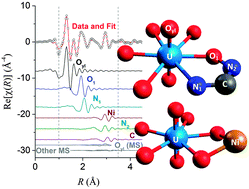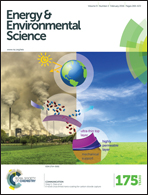XAFS investigation of polyamidoxime-bound uranyl contests the paradigm from small molecule studies†
Abstract
Limited resource availability and population growth have motivated interest in harvesting valuable metals from unconventional reserves, but developing selective adsorbents for this task requires structural knowledge of metal binding environments. Amidoxime polymers have been identified as the most promising platform for large-scale extraction of uranium from seawater. However, despite more than 30 years of research, the uranyl coordination environment on these adsorbents has not been positively identified. We report the first XAFS investigation of polyamidoxime-bound uranyl, with EXAFS fits suggesting a cooperative chelating model, rather than the tridentate or η2 motifs proposed by small molecule and computational studies. Samples exposed to environmental seawater also display a feature consistent with a μ2-oxo-bridged transition metal in the uranyl coordination sphere, suggesting in situ formation of a specific binding site or mineralization of uranium on the polymer surface. These unexpected findings challenge several long-held assumptions and have significant implications for development of polymer adsorbents with high selectivity.



 Please wait while we load your content...
Please wait while we load your content...